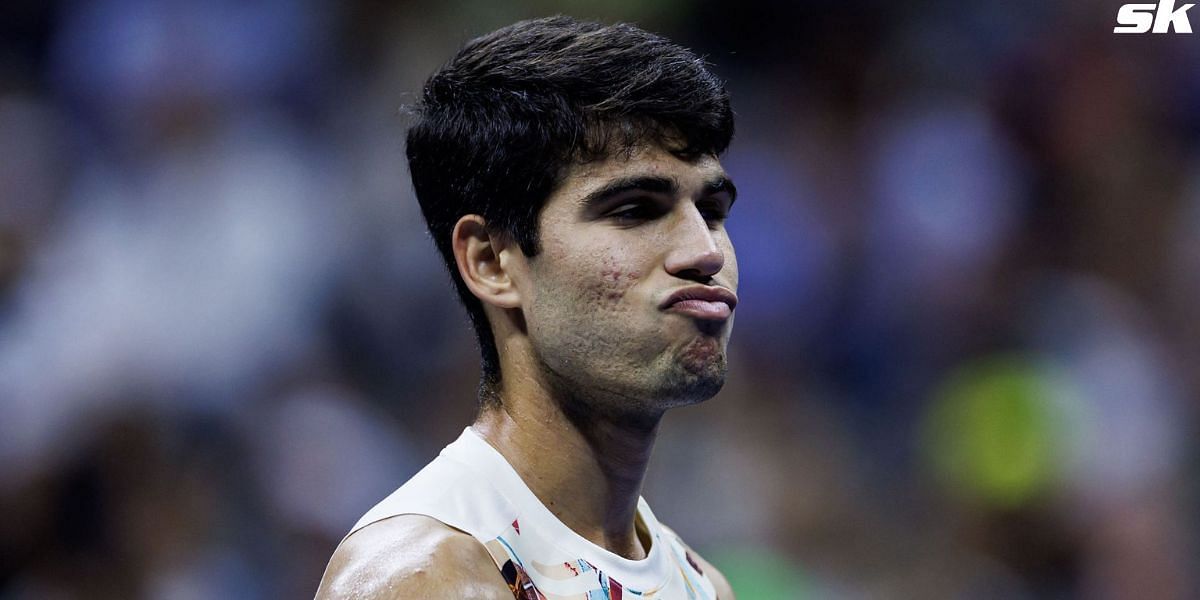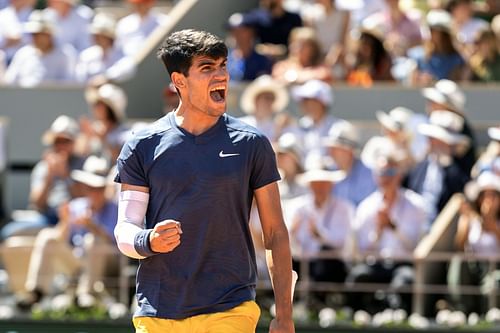
Carlos Alcaraz may complain about the 'killing' ATP calendar, but those who live in $6 million-payday-from-exhibition houses should not throw stones
We are privileged to witness the rivalry between Carlos Alcaraz and Jannik Sinner.
Who will dominate over the next 10 years? Although both have highly aggressive games, the Spaniard and the Italian have different styles. It's already a classic, and we’re going to enjoy it.
Watching them battle it out on the tennis court is captivating. But it's just as interesting to see that they hold different opinions. The rivalry has moved off the court.
"In a way, it is killing us," Alcaraz fired, adding criticism to the way the tennis calendar is made.
"Honestly, it’s hard to find motivation. Sometimes I’m not motivated at all. The schedule is tight, there are so many tournaments. No time off. Sometimes I’d like to take a few days for myself, but I can’t. I have to train, I have to travel, there’s jetlag from travelling around the world," said the two-time Wimbledon champion.
There’s nothing more hypocritical than complaining about the demanding schedule while sitting in a press conference at an exhibition event.
Alcaraz could very well have been on the beaches of southern Spain with his people, enjoying the last days of the European summer and recharging the energy he claims to lack.
The Laver Cup is marketed as a kind of world championship, but in reality, it’s nothing more than a luxury exhibition. It’s true that in 2024 it was taken a bit more seriously compared to other years, but it remains an event where players go purely to make great money. There’s nothing wrong with that; they’re professionals, and anyone would want to earn more money, but they need to take care of their bodies.
Otherwise, they shouldn’t be complaining.
(This feature was originally written for CLAY by Guillermo Salatino and has been reproduced in its entirety.)
The schedule seems to have been designed by an enemy. Who thought it was a good idea to schedule the Davis Cup right after a Grand Slam? And just a week later, there’s what they call a “tournament.”
A Grand Slam requires a huge mental, physical, and emotional toll. The final stage of the Davis Cup World Group started just two days after the US Open (and some teams had to travel to China, without even the justification of playing against the local team). It’s easy to see how the different tennis powers often pull in opposite directions.
Logically, after a major tournament and the traditional Davis Cup, players should take a week off.
Alcaraz, the king of exhibitions in 2024, will face Sinner this Saturday in the final of one of them. The match for the six-million-dollar in the Six Kings Slam.

Who would turn down such a hefty payout? Just for showing up in Riyadh, each player was paid US $1.5 million. Medvedev only played 68 minutes in his loss to Sinner. That’s $362 per second on court. Good for the Russian, although he played with shoulder discomfort and, after losing, announced his withdrawal from the ATP 500 in Vienna.
Going back to the Spanish tennis player, I find it hard to understand how, after deciding to sign up for six exhibition events in one year (The Netflix Slam, Stars of the Open, Laver Cup, Six Kings Slam, The Garden Cup, and Charlotte Invitational), he publicly asked for more time off. His own decisions are what add hours of flights and jetlag to his life and take away moments with his loved ones.
Jannik Sinner is the smart one.
“We’re not obliged to play anything other than the Grand Slams and the Masters 1000s. We have time to play and to rest,” he said, in contrast.
It’s clear that today’s high-level tennis have become a machine for destroying bodies. I hardly know any players who retire completely healthy. And luckily, today only Grand Slams are played as best of five sets. Even so, considering certain guidelines they must follow, top players still have quite a bit of freedom in choosing what to play.
The issue of the schedule also has a lot to do with who’s managing the player. A coach doesn’t just tell the player where to hit the ball, or to bend their knees, or to adjust their stance. Besides all the technical advice, the coach has the duty to build a schedule that matches the player’s performance and takes their wear and tear into account.
Players like Guillermo Vilas used to play 25 tournaments a year. Vilas won 16 in 1977, but he had to compete in that many events. It was madness. Today, with tennis being more physical than technical, it’s very difficult to play that many tour-level championshimps.
Gabriela Sabatini always had good results before Roland Garros, but by the time she arrived to Paris and then Wimbledon, she often got there feeling burnt out.
Gaby peaked in Rome. Nevertheless, she made it to several semifinals in Paris because she was very good. But I’ve always felt that she and her coach, Carlos Kirmayr, didn’t plan well.
You have to know how to choose. You have to take care of yourself and rest. And if the choice is to play exhibitions to fatten your bank account, then there’s only one non-written rule: complaining is forbidden.